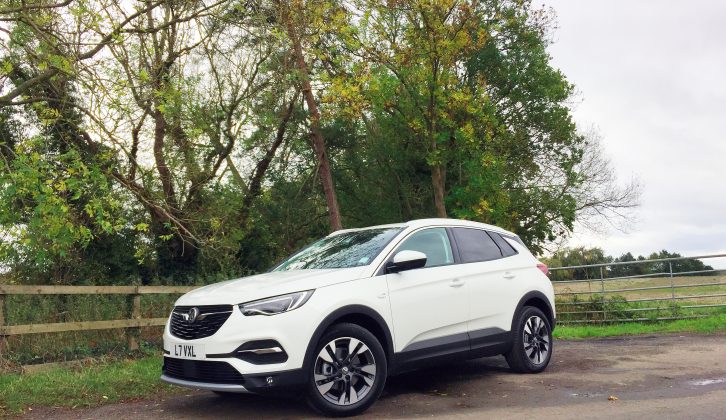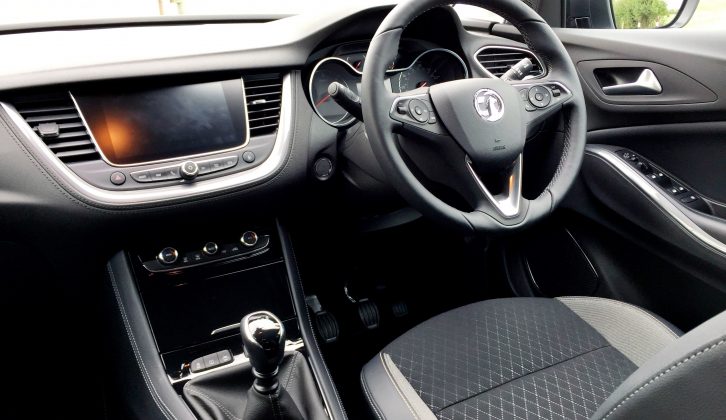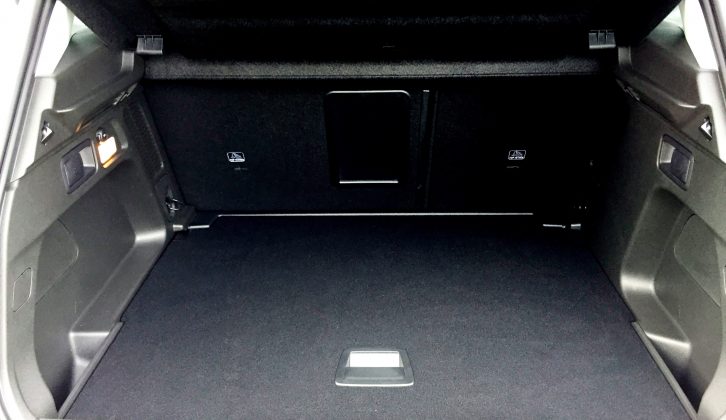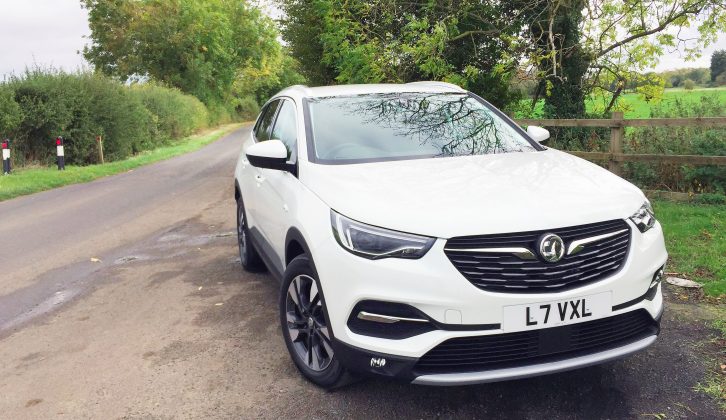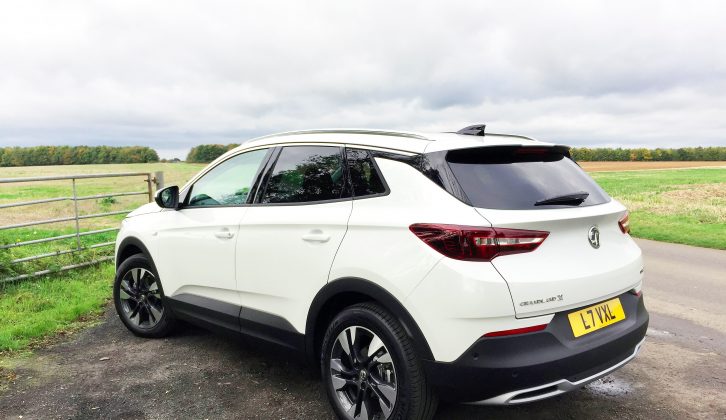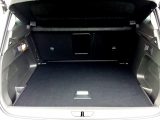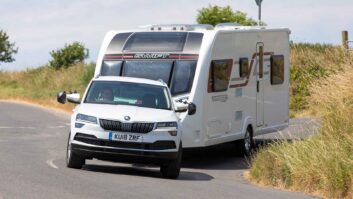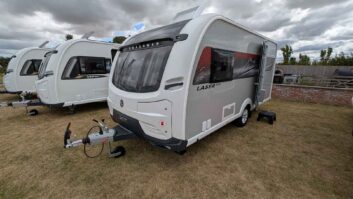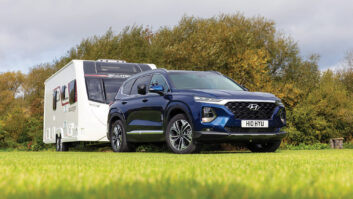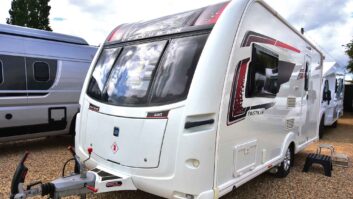‘Grandland X’ is a new name for Vauxhall.
And if things pan out how the manufacturer plans, it’s a name we’re soon going to be very familiar with.
That’s because Vauxhall hopes its new model will become the brand’s biggest seller, second only to the Corsa.
No pressure, then…
So what is a Grandland X?
The Vauxhall Grandland X is the company’s third – and biggest – SUV.
It’s Vauxhall’s assault on the SUV C segment which, despite other markets having wobbles in recent times, is still proving strong.
Indeed, this sector doubled between 2010 and 2016 – and is still growing.
At 4.48m, the five-seat Grandland X is 20cm longer than its Mokka X and Crossland X stablemates, and is positioned to rival the likes of the Nissan Qashqai, Kia Sportage and Ford Kuga, a talented and popular bunch if ever there was one.
Yet despite its high-up driving position, the cladding on the wheel arches and the fact Vauxhall tells us it’s been designed to look ‘robust’, it’s strictly a two-wheel drive vehicle.
Apparently, customers want neither the weight nor the expense of four-wheel drive – caravanners, however, may disagree.
A weighty issue
Especially when you consider that with kerbweights of 1350-1430kg across the range (including 75kg for a driver), the minimum 85% match figure is 1148kg.
To put this into context, comparable figures for the Qashqai, Sportage and Kuga respectively are 1331-1527kg, 1454-1690kg and 1579-1716kg.
While we’re talking numbers, the towball limit for all variants is 70kg, while maximum towing limits for the range are 1100-1400kg, depending on model.
A further concern for caravanners could be its pedigree. We’re yet to tow with the Crossland X, but at this year’s Tow Car Awards, the Mokka X received a paltry two-star overall rating.
But let’s not write it off before we’ve begun.
After all, we’ve been impressed enough by the Astra Sports Tourer and the Insignia Grand Sport to award them glowing four-star ratings, so there’s hope yet.
The range
Vauxhall’s flagship SUV is available with either a 1.2-litre, 130PS (128bhp), turbocharged petrol engine delivering 51.4-55.4mpg on the combined cycle, depending on the variant.
There’s also a 1.6-litre, 120PS (118bhp) turbodiesel that returns 61.4-70.6mpg.
All engines can be paired with either a six-speed manual or a six-speed automatic gearbox.
There are four trim lines. Opt for entry-level SE, from £22,485 OTR, and included will be Bluetooth connectivity, a USB port, digital radio, Apple CarPlay and Android Auto, a seven-inch colour touchscreen, dual-zone electronic climate control, cruise control, six airbags, LED daytime running lights, 17-inch alloy wheels and a lane departure warning system.
Tech Line Nav, priced from £22,310 OTR, adds a one-inch larger touchscreen, voice control, ambient lighting, a powered tailgate, keyless entry and start, 18-inch wheels and tinted rear windows, among other items.
Upgrade to Sport Nav (from £24,595) and you’ll also get goodies including 18-inch diamond-cut alloys, while Elite Nav (from £26,660 OTR) gets you items such as heated front seats, a powered driver’s seat, 19-inch diamond-cut alloys, additional safety kit and adaptive LED headlights.
There are also 10 new exterior colours and four interior trim choices, plus it’s £320 if you fancy a contrasting roof.
In the cabin
If an SUV isn’t your daily driver, you’ll immediately appreciate that you can just slide into the driving seat, with no bending or limb-twisting.
Although Vauxhall was at pains to say that there are no hard plastics in the cabin (hurrah!), we’re not sure about the seamed material on the dashboard top.
It is still quite plasticky, and there’s no escaping the fact that the indicator stalks are very much hard plastic with a stiff, undamped movement.
However, not every primary point of contact disappoints – both the steering wheel and gearlever have a pleasingly upmarket feel.
The gloss-black trim, the grey U-shaped edging under the touchscreen and the chrome highlights throughout lift the cabin and make it feel more premium – ditto the chrome-edged double-dial instrument cluster that’s easy to read.
It’s also good to see that the dash is logically laid out. The controls are grouped, with infotainment at the top, climate-control-related items next, and driving controls/modes around the gearlever.
On the road
It’s a nice car to drive, but one you’re unlikely to want to wax lyrical about, although the steering is direct and well-weighted, and it proved an easy companion.
We spent most of our time driving a 1.6-litre diesel with the manual gearbox in Sport Nav trim.
You’d be forgiven for thinking that 118bhp and 221lb ft torque doesn’t sound a lot, but there’s easily enough pace for everyday driving.
There’s no dramatic thump as the torque kicks in as you might get with more powerful units, but it peaks at 1750rpm, so it’s always ready to deliver.
In fact, this proved to be a very flexible engine, pulling well throughout the rev range, even in sixth – the gearbox is confidence-inspiring, the clutch light.
The four-cylinder engine was a little gruff under load, however, but this faded to nothing when cruising.
It was also pleasing to note that wind noise on the move was very well suppressed, despite the blustery conditions.
Less easy on the ear was the road noise, although we suspect our test car’s 18-inch wheels were at least partly to blame for this.
The ride was also too firm – and, again, those 18-inch wheels can’t have helped in this regard.
Petrol performer
We also spent time driving the petrol, again with the six-speed manual.
The level of performance achieved from the engine belies its modest 1199cc displacement.
In fact, this little three-cylinder engine felt surprisingly lively and engaging, and not as strained as we thought it might.
The direct-injection, turbocharged engine has 128bhp at 5500rpm plus 170lb ft of torque at 1750rpm.
Although before we bring out the bunting for a compelling, non-diesel option, the petrols have lower kerbweights (1350kg and 1370kg for the manual and automatic respectively, compared with 1392kg and 1430kg for the diesels).
Space and kit
Rear-seat space is decent and despite the sweeping window line and privacy glass, visibility out is good – they also have their own air vents back there.
Boot-space starts at a respectable 514 litres, with a maximum of 1652 litres, and there’s a double load floor – the boot is easy to open and close.
And we noted that the large wing mirrors not only give great rear visibility, they should provide a secure perch for towing mirrors.
Prices for the optional tow bar (fixed or removable, with electrics) range from £304 to £535, excluding fitting.
And if you have a puncture, there’s a tyre inflation kit as standard – a space-saver spare is a £110 option.
Is it a contender?
This is a likeable, amiable car, but a class-leader? Probably not.
Of course, our opinion is clouded by its low weight, which limits the number of caravans that are legal matches.
And it must be said that it’s entering a highly competitive class and going against some very talented rivals.
As a first attempt, it deserves praise, but we’ll reserve our final verdict until we’ve hitched up to see what tow car ability it has.
Available to order now, the Vauxhall Grandland X is priced from £22,310 OTR and will arrive in showrooms in December.
The 1.6 diesel proved to be a very flexible engine, pulling well throughout the rev range
